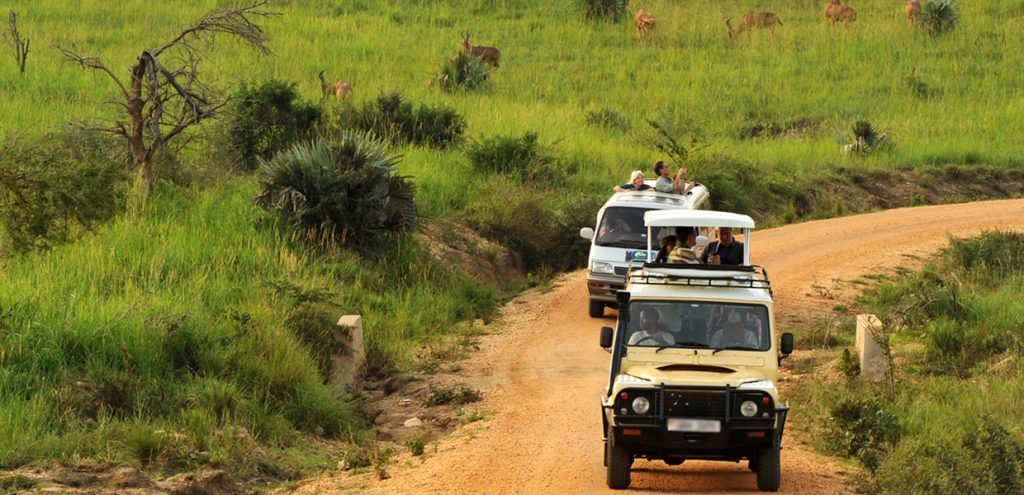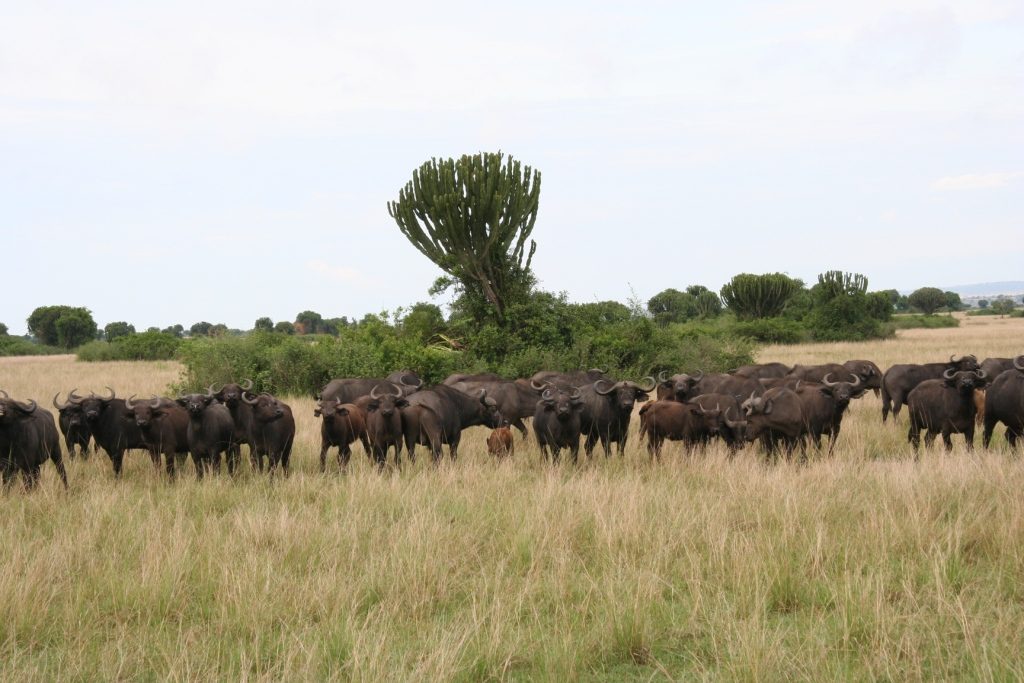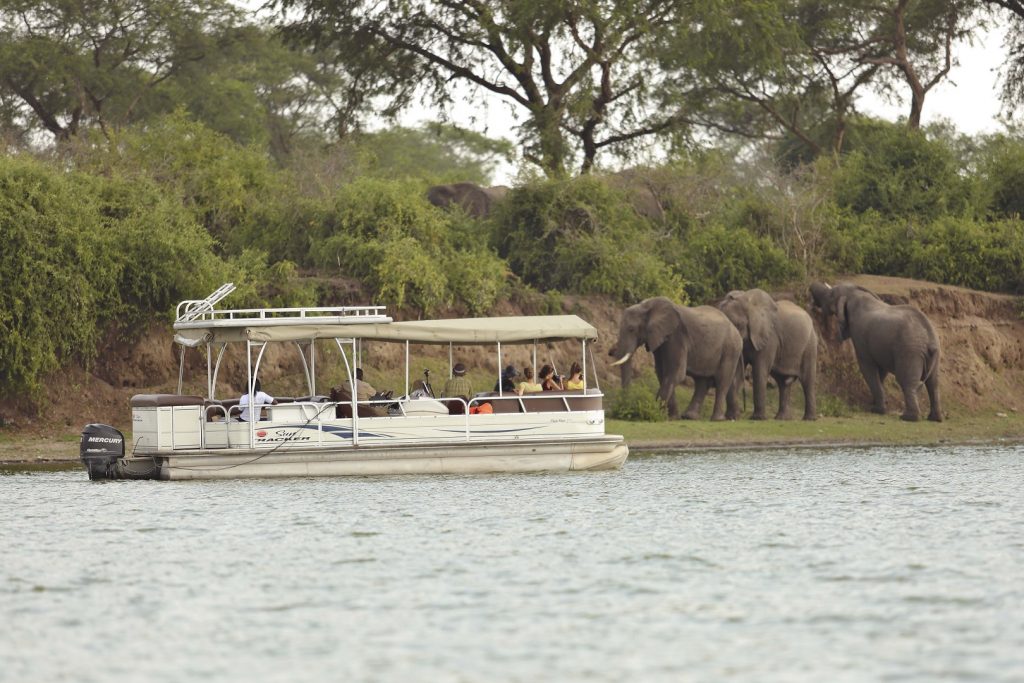Queen Elizabeth National Park which is approximately 1,978 square kilometers (764 sq mi) is one of Uganda’s oldest national parks formed officially, along with Murchison Falls National Park in 1952. It is understandably Uganda’s most popular tourist destination located in the western region of Uganda, spanning the districts of Kasese, Kamwenge, Rubirizi, and Rukungiri.
The park lies in the shadow of the mighty Rwenzori Mountains alongside the flat terrain of the great western arm of the East African Rift Valley escarpments. As a result, this gives it diverse ecosystems and a variety of wildlife that got the national park listed as one of the UNESCO World Biosphere Reserves. Previously the park used to be called Lake Edward and Lake Gorge Game Reserve in the 1920s, before being gazetted.

Queen Elizabeth National Park was founded in 1952 as Kazinga National Park. It was renamed two years later in 1954 to commemorate a visit by Queen Elizabeth II and Iddi Amin later attempted to rename it Mountain Rwenzori National Park but his effort did not last long since he was overthrown from power in 1979. From the lodge terrace, it’s almost impossible to tell which way the Kazinga channel flows. It actually flows west (to your right) from Lake George to Lake Edward, but since the change in water level along the 36km channel is just about 40cm, the water moves extremely slowly.
Queen Elizabeth National Park is approximately 400 kilometers (250 mi) by road southwest of Kampala, Uganda’s capital, which is roughly a seven (7) hour’s drive. The town of Kasese is just outside the northeastern edge of the park, while the town of Rubirizi is just outside the park’s southeastern boundaries.
Vegetation and Wildlife in Queen Elizabeth National Park

The park’s diverse ecosystems, which include sprawling savanna, shady, humid forests, sparkling lakes, and fertile wetlands, make it the ideal habitat for the classic big game. That is why the park is famous for the unusual tree-climbing lions, the number of primate species, and the large concentration of hippos.
Queen Elizabeth National Park contains more than 95 species of mammals, more than any other park in Uganda; more than 10 primate species that include chimpanzees, baboons, L’hoest’s, and black and white colobus monkeys. There are over 20 species of predators, such as hyenas, lions, leopards, crocodiles, and jackals, and over 600 species of birds that include wetland, savanna, and woodland birds; which makes it number one birding area in Uganda, the second highest of any national park in Africa, and the 6th highest of any park worldwide.
While in Queen Elizabeth National Park expect to see over 11 kinds of kingfishers, black bee-eaters, Shoebill storks, raptors, and of course, a range of birds of prey. Beautiful flocks of pink flamingos tend to congregate around the crater lakes found in the northern part of this park. There are lots of things to see and activities to do while in this park, which makes it an incredible place to visit.
Some of the other attractions to look out for while in the park include the Kazinga channel, the salty Lake Katwe, the Kasenyi plains, and Maramagambo Forest.
Uganda’s Queen Elizabeth National Park is truly ‘a medley of wonders’!
Activities that can be done

Activities include chimpanzee tracking, game drives, a bat cave view in Maramgambo Forest, nature walks, hiking trails, and cultural encounters with the local Banyaraguru people. There is much to do in this park, so plan on spending a number of days here.
Queen Elizabeth National Park extends from Lake George in the northeast to Lake Edward in the southwest, which includes the Kazinga channel that connects the two lakes. This channel favors quite a good number of aquatic wildlife such as hippos, crocodiles, fish, and over 600 bird species commonly sighted at the Kasenyi birding site. Kazinga channel has the largest concentration of hippos in the world!
The park covers the Maramagambo forest and Ishasha plains which hides the famous tree-climbing lions in its fig trees. This also borders the park on its western end, together with Virunga National Park in the Democratic Republic of the Congo. Kyambura Game Reserve and Kalinzu forest reserve border the park to the east, which is just before the Kazinga bridge as you head to the park from the Bushenyi side. Then there’s Kibale National Park in the north and Kigezi Game Reserve in the south.
The neighboring communities to the park have been engaged in much conservation awareness in an effort to boost tourism, through culture and other tourism-related projects. These have helped to promote conservation of the wildlife and reduce external pressure from the community.
